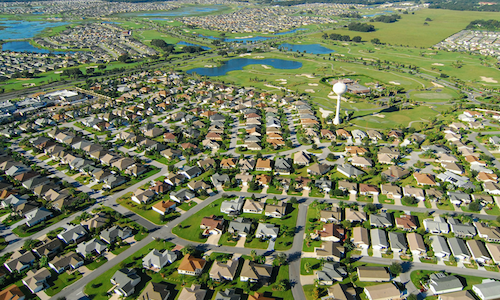
Over the last 15 years, 91 percent of population growth in the country’s 50 largest and most urban cities took place in the suburbs, according to a joint report from the Urban Land Institute and RCLCO.
That’s a stat that runs counter to much of the rhetoric you hear in the housing industry these days. Walkability and accessibility have become such strong selling points for homebuyers that the sprawl of the suburbs feels antiquated, and almost unwanted ULI’s report reminds us that is not the case.
In 2015, across the cities ULI analyzed, 79 percent of the metropolitan population lived in the suburbs – that includes 78 percent of households and 75 percent of Millennials. And in Boston, 78 percent of the population lives in the suburbs, which, as the below table shows, accounts for 82.6 percent of the metropolitan area’s land mass.
| Population | Land Area | |
|---|---|---|
| Urban | 20% | 1.5% |
| (Suburban) Established high-end | 16% | 8.5% |
| (Suburban) Stable middle-income | 5% | 1.7% |
| (Suburban) Economically challenged | 22% | 6.6% |
| (Suburban) Greenfield lifestyle | 10% | 19.3% |
| (Suburban) Greenfield value | 25% | 46.7% |
| Rural, park/rec, other | 2% | 15.9% |
Adam Ducker, managing director at RCLCO, called the what’s happening in America’s largest cities “very exciting and important,” and explained that “the suburbs have evolved far beyond the monolithic bedroom community of our imagination.”
So, truly, what about the suburbs is so great? Here are four points the report highlighted:
1. They’re the affordable option
Median home values in the suburbs of the country’s largest cities were, on average, $60,000 less than they were in their corresponding urban cores, the report found. There were some variations from city to city, but the overall trend was evident. And because of the relative affordability of any given city’s suburban collar, younger adults aged 25 to 34 have begun making their way out – particularly to economically challenged and greenfield value (i.e., close to the fringe) suburbs, where housing costs are typically the lowest.
2. They’ve diversified
Contrary to the 1950’s cookie-cutter suburban stereotypes, there is no racial divide separating a city’s urban core with its surrounding suburbs. In fact, on average, 76 percent of a metropolitan area’s minority population lives in the suburbs, the report found. And that finding is in line with other studies, such as an analysis from Myron Orfield and Thomas Luce, who determined that most suburbanites now live in predominately non-white neighborhoods – a shift they described as both recent and ongoing. They claimed that “suburban communities are now at the cutting edge of racial, ethnic and even political change in America.”
3. Their growth is not only outward
An easy way to imagine suburban growth is to picture it as an extension outward (i.e., greenfield exurbs becoming regular old suburbs). But that image would be inaccurate, because so much of suburban development is happening in already established communities. Between 2000 and 2015, 72 percent of new suburban housing units were built in stable middle-income, economically challenged and established high-end suburbs. It shows that suburbs are actively evolving to handle increased populations.
4. They’re still sprawling
The majority of workers in the suburbs are still driving alone to work – which, long term, may prove environmentally unsustainable; however, currently, 63 percent of Millennials prefer living in a “car-optional” neighborhood. Additionally, the spacing of the suburbs lends itself well to orderly, safe and quiet neighborhoods – in other words, the top characteristics Americans look for in a community.
